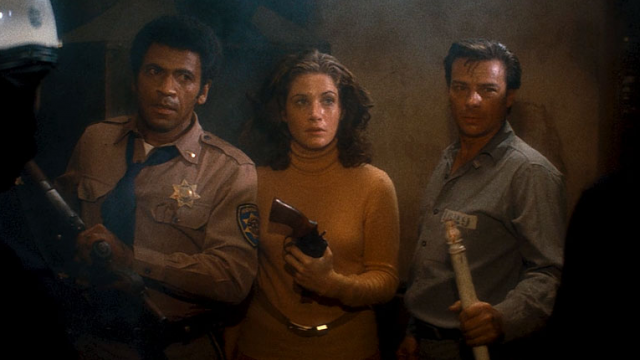Assault on Precinct 13 was John Carpenter’s second film, and it finds his hallmarks already in place. The movie–made for under $100,000–is lean and mean, an atmospheric and perfectly paced ride with a killer synth score. The structure is simple, a formula that’s an homage to both Rio Bravo and Night of the Living Dead: siege(location + characters). Carpenter executes each element with unshowy effectiveness. You don’t forget you’re watching a movie–this is a distillation of some of movie-going’s signature pleasures–but you temporarily forget somebody made it. It seems like it just arrived like this, an always preexisting artifact beamed straight to you. Truly, if the seventies had not existed, the movies would invented them, and we see that here as well as we see it anywhere.
Everything here comes down to pacing and place–not the traditional sense of place in terms of a vivid location (though the abandoned LA landscape Carpenter creates here is haunting in its own way, an endless stretch of empty roads and vacant lots, all alternately shadowy or sun-bleached) but in the sense of physics and geometry, of the defensible or endangered space around the characters. The pacing is non-stop without being breathless, with the character beats happening, quietly and unobtrusively, when it’s natural for them to do so. It’s hard to talk about the acting because everything is so stripped-down, but Austin Stoker, Darwin Joston, and Laurie Zimmer all do a solid and memorable job of playing characters who, sketched out though they are, have a sense of implied depth; the three of them have an easy chemistry with each other. They’re comfortable focal points to follow as the story moves on greased rails.
On top of all that, it’s a movie that will forever shape how one thinks about ice cream trucks and (especially) vanilla twist cones. Beautifully, economically done genre filmmaking that shows Carpenter already working at close to the height of his powers.

